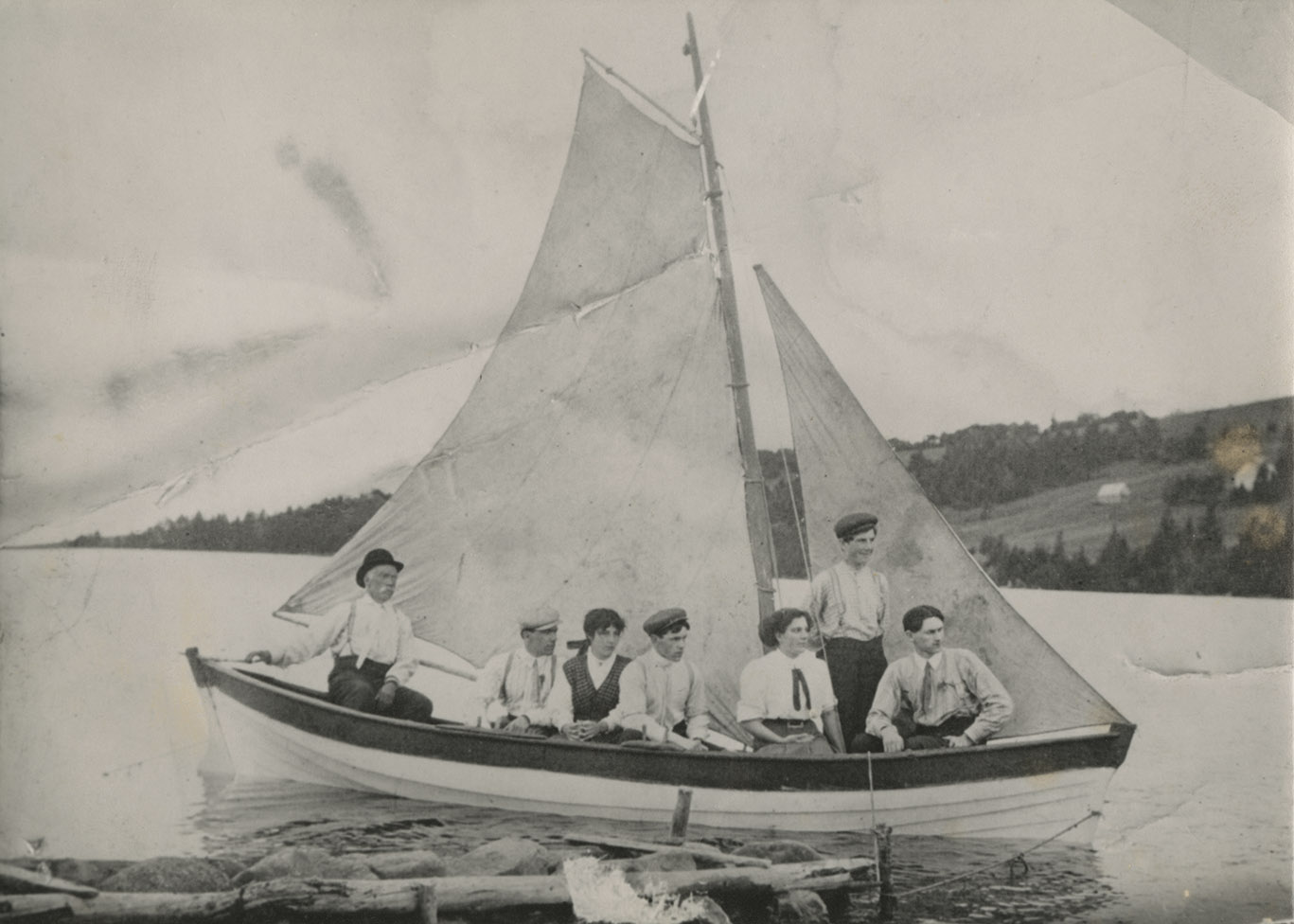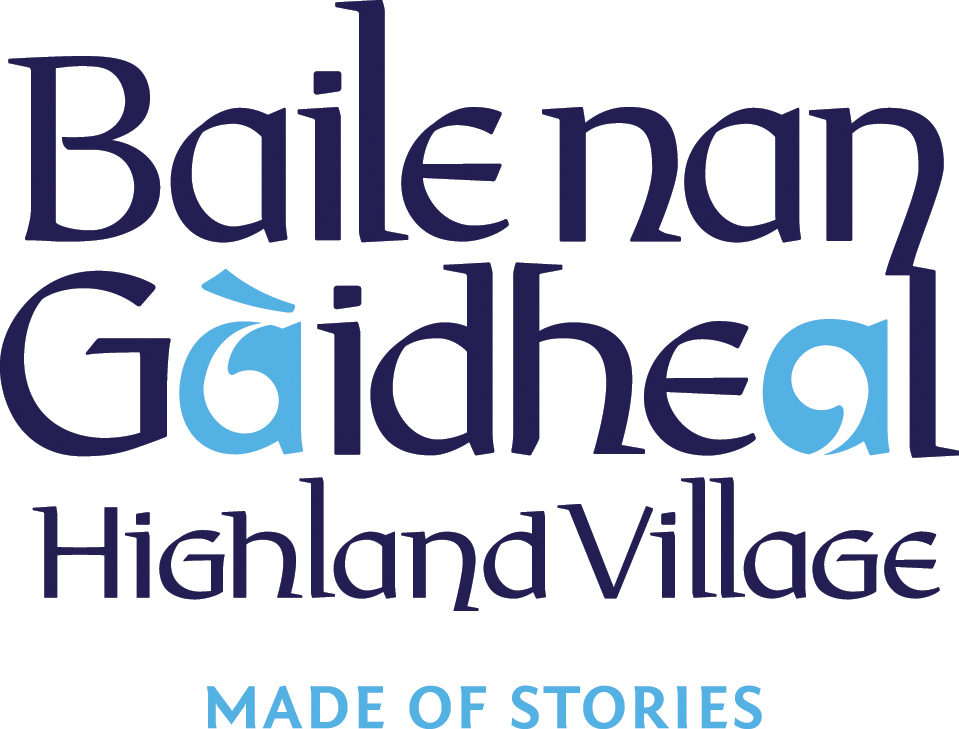Council of Nova Scotia Archives
Baile Nan Gàidheal | Highland Village, Iona
Ìomhaidheachd Ghàidheal na h-Albann Nuaidh Faces of Gaelic Nova Scotia
Is fheàrr na `n t-òr sgeul air inns’ air chòir
Better than gold is the tale well told
The faces in our family photos create a silent memory of a moment in time. From tin-type to modern digital images, study the faces. What stories do you see? Our exhibit is divided into 11 sections to tell the Nova Scotia Gaelic story and give a glimpse of its faces through time.
The Scottish Gaels are a people indigenous to much of the mountainous area of northern Scotland and the Hebrides. Their linguistic and cultural ties are closely related to the Gaels of Ireland, historically separate from the language and society of the Scottish Lowlands. Among the thousands of Gaelic-speaking Highlanders immigrating to Nova Scotia in the 18th and 19th centuries, few would have understood a single verse of Robbie Burn’s poetry
Iain Caimbeul, Leadaig, Earra-Ghàidheal, Alba (John Campbell, Ledaig, Argyllshire, Scotland)
An Gàidheal Eachdraidheal / Gaels of the Past
Highlanders arriving in Nova Scotia were sometimes little pleased with their new circumstances, as evidenced by the Tiree bard, John MacLean, who lamented the loss of an easier life in western Scotland and the Laird of Coll’s patronage:
Iain mac Ailein, Bàrd Abhainn Bhàrnaidh (John MacLean, Barny’s River, Pictou County)
Not all Highlanders shared the same opinion on challenges for an improved life in the province’s northeast. A Uist song maker’s view of a future on Cape Breton’s Judique shore extolled potential.
Mìcheal Mór Dòmhnallach, Uibhist- a-Deas/Eilean Eòin (“Big” Michael MacDonald, South Uist/Prince Edward Island)
A’ Ghàidhlig Mhór / Language Transmission
The Highlanders’ language of field and fireside was Gaelic, the medium through which their customs, sung poetry, lore and stories were transmitted over generations.
The Highlander’s oral literature encompasses a broad swath of mental engagement. Cultural expression includes rhymes, multiple genres of literature, as well as recititation from an immense song tradition and critical discussion of poetry, dance, music and genealogy.
Nòs a’ Chiùil `sa Chaidreamh / Sharing Musical Traditions
“Bha feadhainn ann a bha math gu seinn òrain agus feadhainn ann a bha math gu aithris dhuan agus feadhainn a bha fìor mhath gu sgeulachdan. Agus bha cuid dhiubh a bha math gu cluich ceòl agus bha cuid dhiubh math gu dannsa. Agus bha fearas-chuideachd a bha cho math `s a ghabhadh a bhith ann, tha mi ‘n dùil.”
Some were good to sing songs; others were good to recite verse and some excelled at storytelling. Others were good at playing music, or dancing. In my view, the level of entertainment was unsurpassed.
Eòs Nìll Bhig nach maireann, Ceap Leitheach (The late Joe MacNeil, storyteller and author of Sgeul gu Latha /Tales until Dawn, Middle Cape, Cape Breton)
A’ Tighinn Beò air Tìr / Traditional Ways of Life, Gaels Working Together, Traditional Food
Na Làithichean Tràtha / The Early Days
Gaelic-speaking settlers took up land holdings in Nova Scotia based on kinship and common religious adherence. Settlers hailed from the Hebrides and mainland districts such as Morar, Moideart, Lochaber, Sutherlandshire, Glen Urquart and Strath Glas. Commuity-based distinctions in such as dialect, song compositions, religiosity and surnames can be observed to the present in eastern Nova Scotia.
The vast majority of Scottish Gaels coming to Nova Scotia spoke no English and were illiterate. Ministers, or priests, would often look after the need for correspondance. Regardless, the Gaels’ were not an unlettered people. The song tradition alone voluminously records their Nova Scotia expeience. A Highland immigrant settling on Boulardarie Island remarked on the custom of footwear in the winter:
Coinneach “Caomh” Moireasdanach, Gearrloch/An t-Eilean Mór (Kenneth Morrison, Gairloch/Boularderie Island
Beatha an Tìr nan Craobh / Life in Nova Scotia
In a developing economy, with few commercial foundations, rural life on the farm - and by the sea, meant diversification in a subsistence way of life. Women kept the home fires burning, while men often worked away seasonally. Employment in lumber camps was a frequent, but taxing, opportunity for wages.
Clanna nan Gàidheal / Gaelic Families and Family Gatherings
Gàidhealtachd na h-Albann Nuaidh an Là an-Diugh / Contemporary Gaelic Nova Scotia
Kinship is yet a central element in the Gaels’ social discourse, with the patronymic a frequent topic of conversation during the informal visit (céilidh). Participatory language arts allow for hearing and remembering words and stories told in a natural, unstructured setting.
Dòmhnall Dhùghaill, `ic Ghilleasbuig `ic Dhùghaill `ic Phàdraig, Am Bràighe (Donald MacFarlane, South West Margaree, Inverness County)
(Bana)Seanachaidhean / Tradition Bearers
The Gaels’ legacy of learning socially remains central to cultural transmission. Current tradition bearers lead language learners and youth, who are passionate in maintaining cultural continuity, as they make Gaelic language and custom a part of contemporary lifestyles. The art of conversation, communal sharing of traditions and ethnic knowledge, is esential to bringing our authentic identity into the future.
Eòghann Eairdidh Sheumais, Eilean na Nollaig (Hughey MacKenzie, Christmas Island, Cape Breton County)
Na h-Òigrigh `s an Ùine ri Teachd / Young Gaels and the Future of Gaelic
Carrying Gaelic tradition forward, through language classes, music, dance instruction and immersion sessions, research and recording tradition bearers, is an important part of the learning cycle. We hope these images will inform, inspire and lead you to explore Nova Scotia’s Gaelic culture and its wealth of traditions.
Dòmhnall Alastair MacDhòmhnaill, Framboise, Siorramachd Ritmeand (Dan Alex MacDonald, Framboise, Richmond County)
Baile Nan Gàidheal | Highland Village is an outdoor folk life centre, with 11 period buildings, that tells the story of Gaelic settlement in Nova Scotia through first person animation and programming. We are located overlooking the majestic Bras d’Or Lakes in Iona, Nova Scotia, the heart of central Cape Breton.
For more information about the Museum and the Archives, please visit the Highland Village website.


